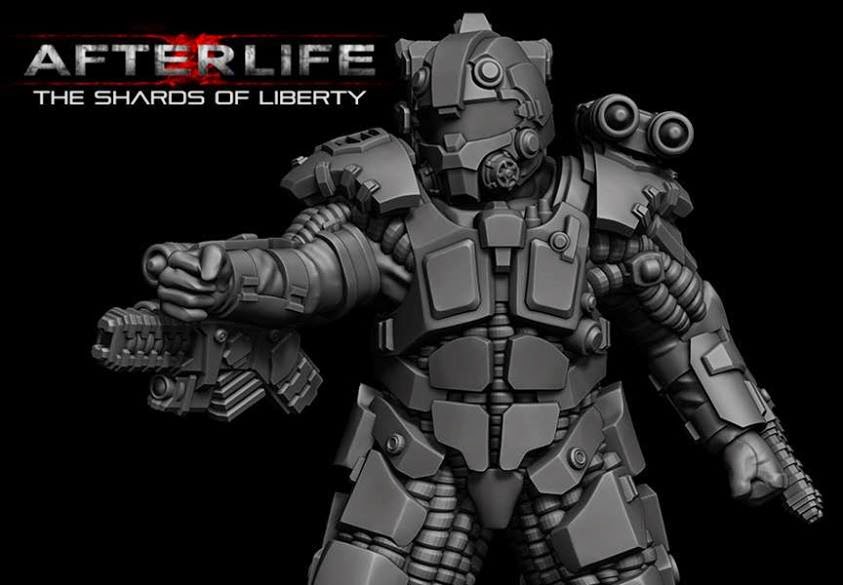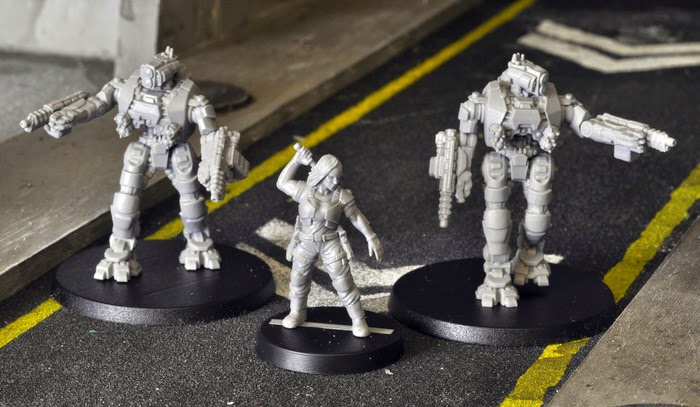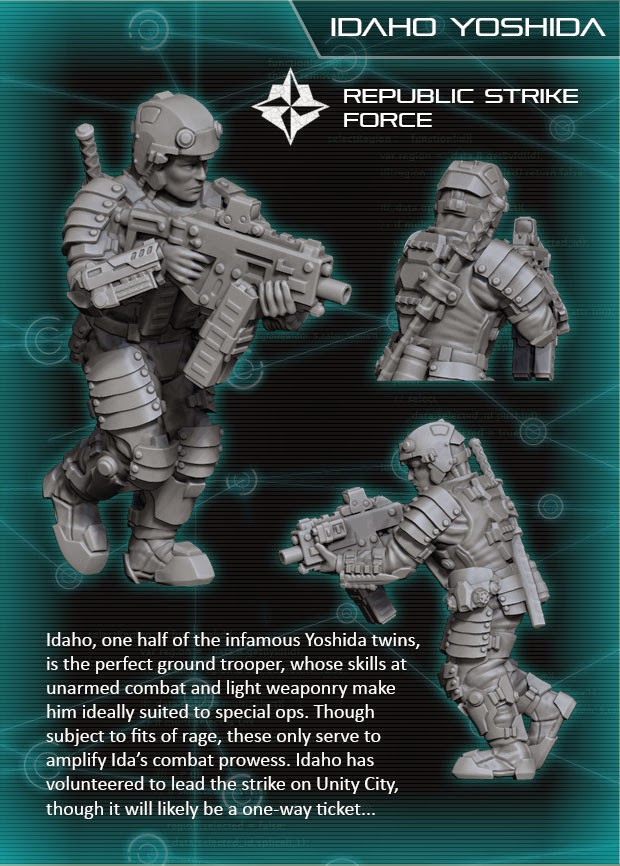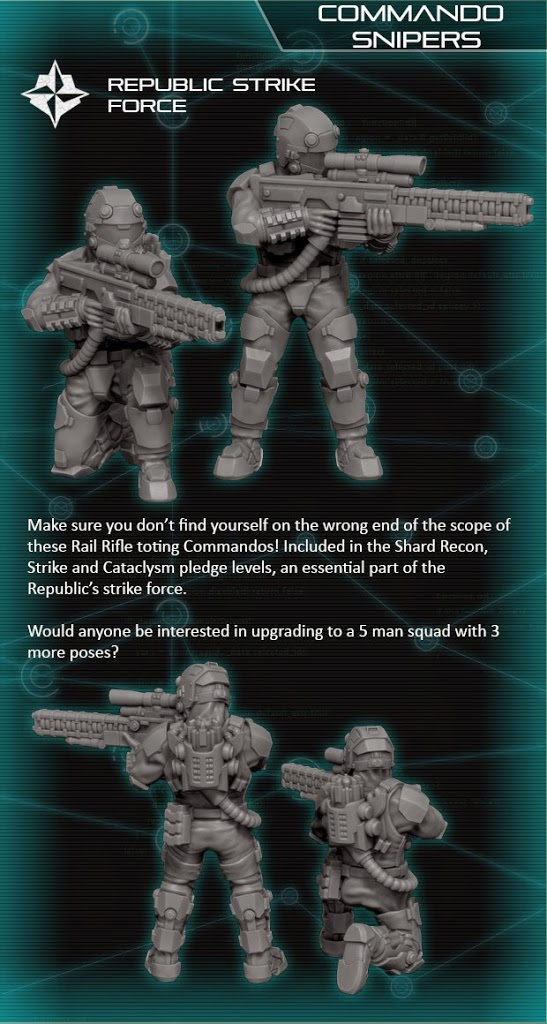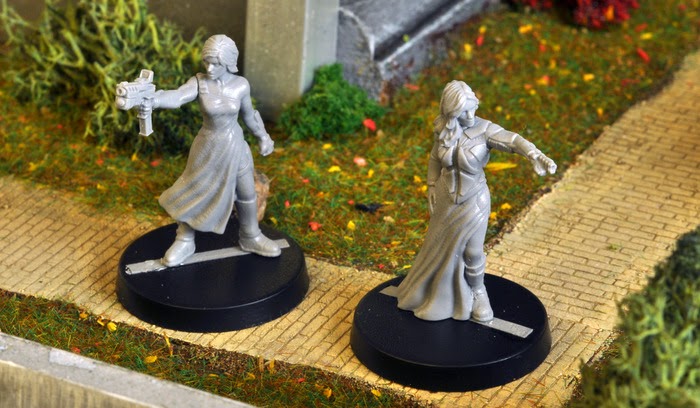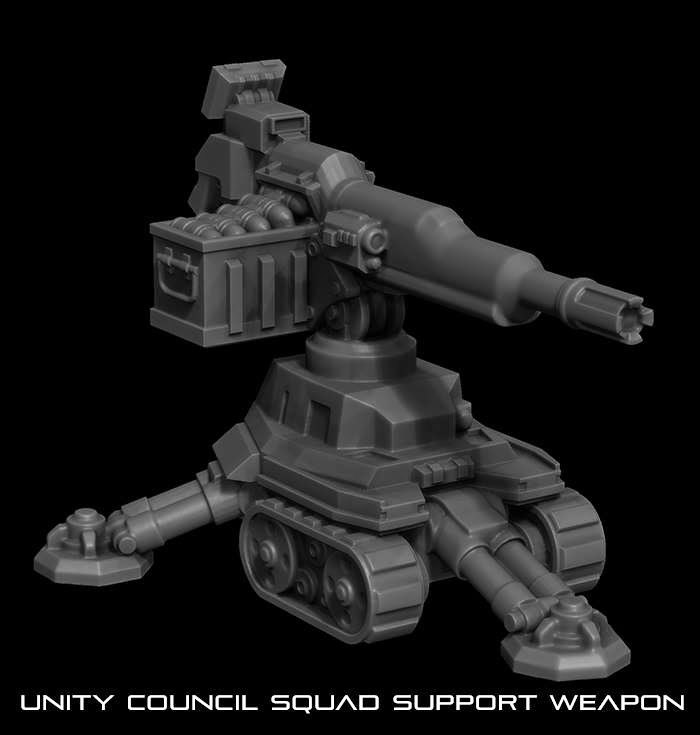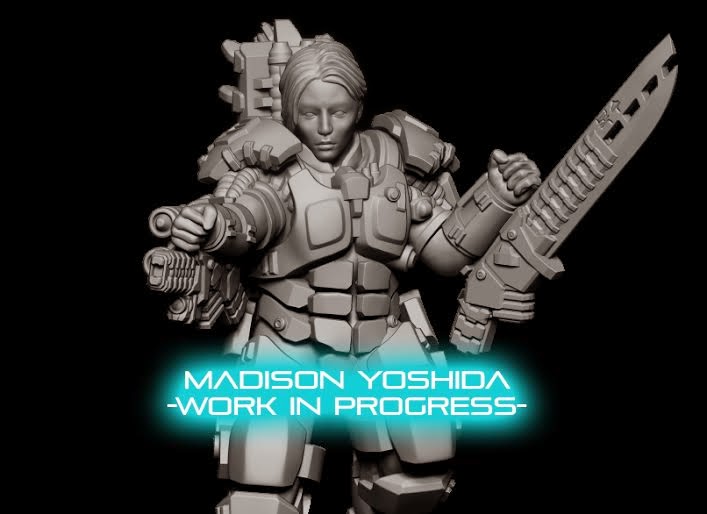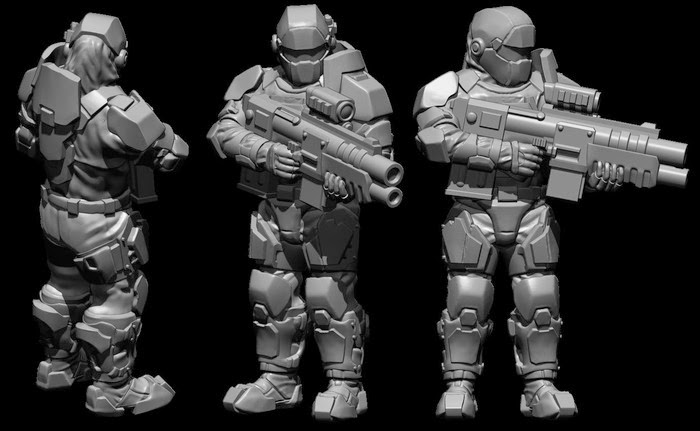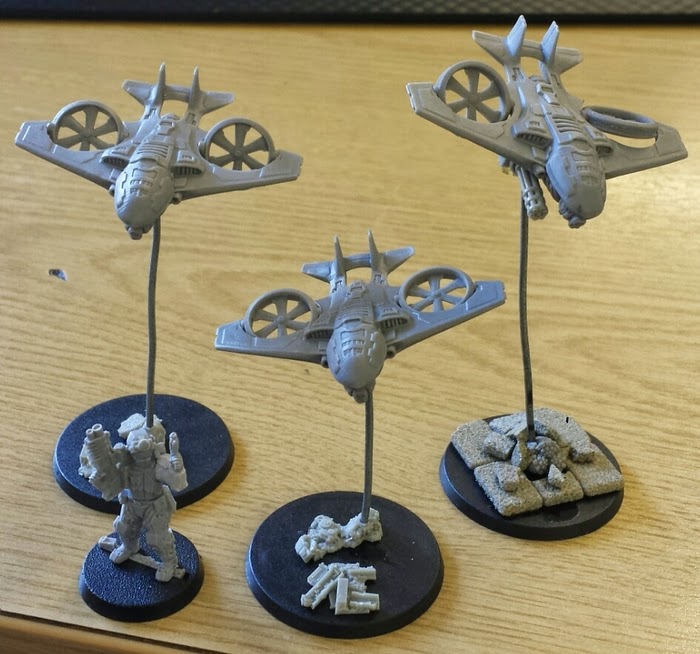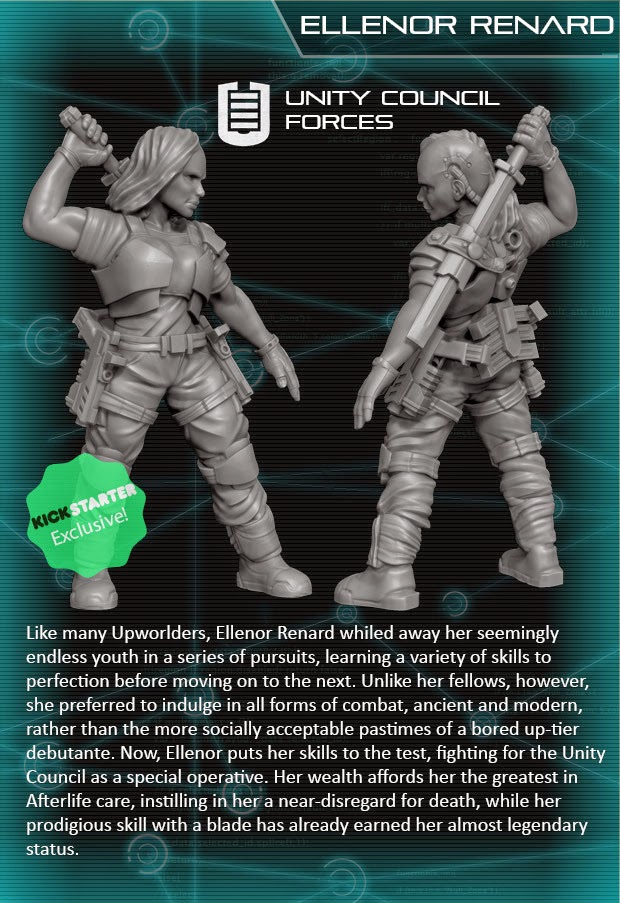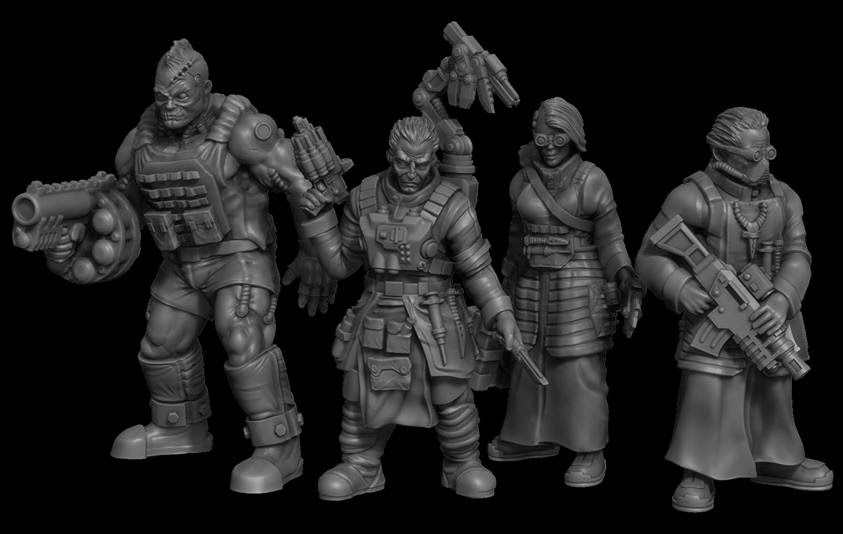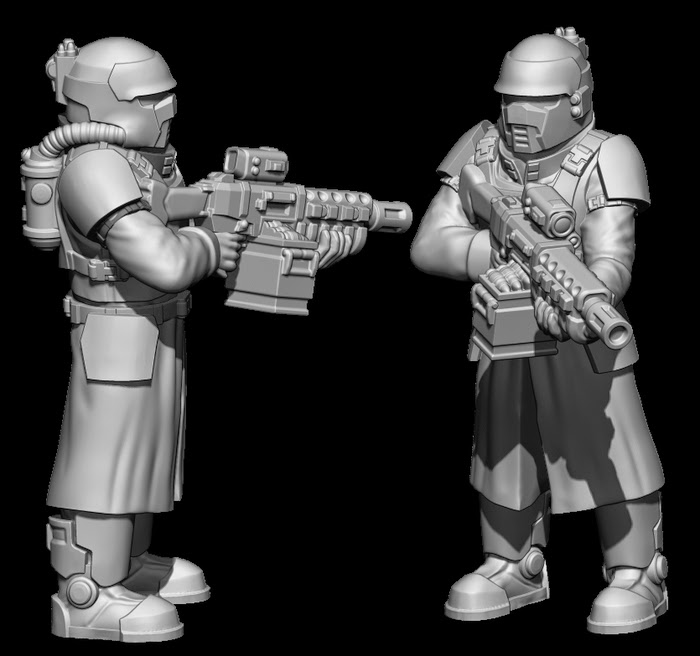Interview: AFTERLIFE – The Shards of Liberty
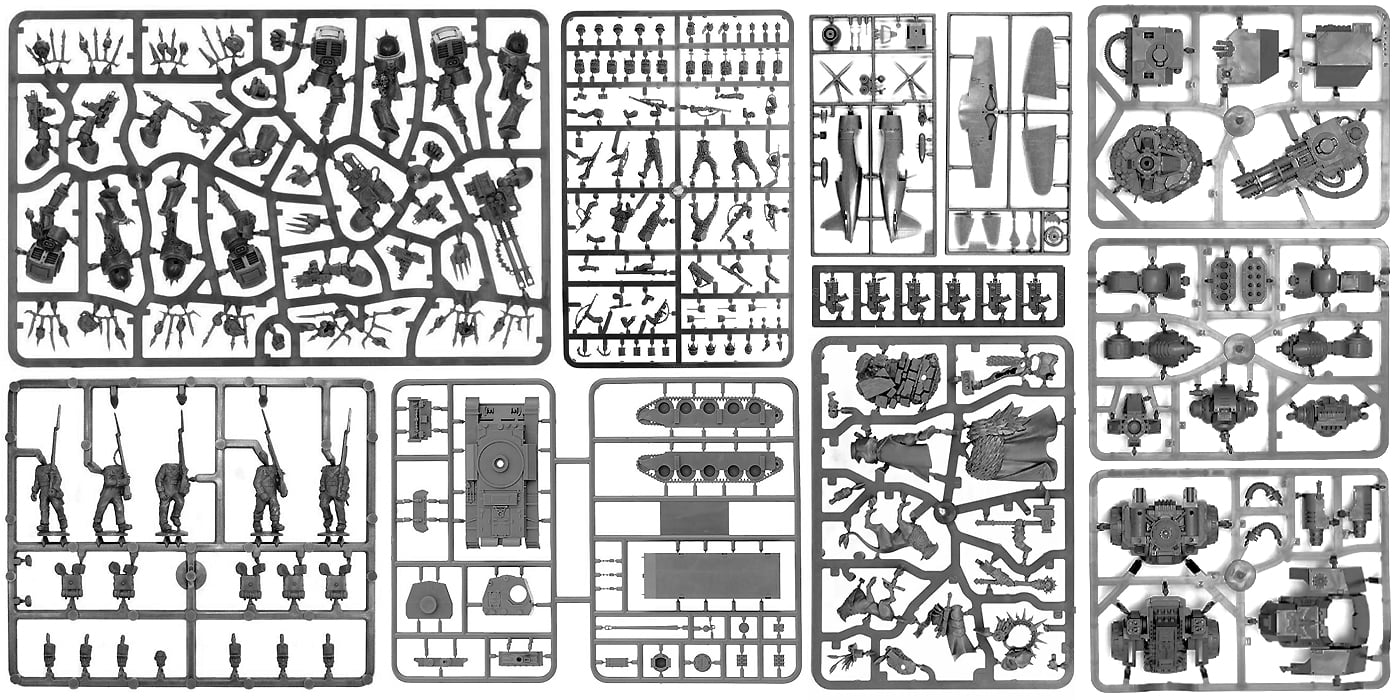
Hello everybody, I’ve had the chance to talk with Joel Pitt from Anvil Industry about their current Kickstarter and their new game system, Afterlife. So if you are interested in a fast-paced action-packed tabletop game take a look (there are some exclusives previews in here, too)!
(Please note: Some of the designs shown here are not final and may change)
Me: Who are you and what is your position at Anvil Industry?
Joel: I’m Joel, Co-Director of Anvil Industry. My job is to developing and designing our
expanding product range and now, our new wargame AFTERLIFE.
Me: When and how did Anvil Industry start?
Joel: I kicked things off about three years ago now, starting in my parents garden shed with a small range of conversion parts I sold on Ebay. The product range has expanded a lot since then, we now work from studios in East London, and we are now aiming to get our product range stocked in retail stores.
Me: How many people work for Anvil Industry?
Joel: Four currently. Myself, my Co-Director Charlie, who handles day to day running of the company and the website, photography, graphics etc. Adam is our main mould maker and manufacturer, and Christina handles order fulfillment and admin.
Me: When did you decide to make your own game?
Joel: About 18 months ago. Making conversion parts and generic miniatures was fun, but I
wanted a new challenge and a chance to exercise full creative control over a new system with entirely original miniatures.
Me: Describe Afterlife in three words!
Joel: Power Always Corrupts
Me: What distinguishes Afterlife from other games?
Joel: The game is set on a near future Earth, so it lacks alien species common to most other
Sci-Fi games out there. The game world is both dystopian and post-apocalyptic, but similar enough to our own world today that people can hopefully really empathize with the Factions and Characters.
We are placing a strong emphasis on the narrative story, but also I want to give freedom to gamers to easily create their own unique factions with their own background set in the wider narrative, as that is what has always had strong appeal to me as a gamer.
Me: How will the game scale from skirmish to army-size battles?
Joel: The Game is based around Infantry, light Mechs and smaller vehicles, with typical
squad sizes from 1-8 figures. The game will be designed and tested at various scales, with larger battles using larger Unit sizes, and combined Units which fight as a single formation.We are testing the game on a 4×4 table, but larger table sizes would work well with the right amount of terrain, as movement is quite fast (a typical infantry Unit can run 10″ per activation for example)
Me: What is the basic mechanic in the game?
Joel: Alternating Unit Activations, which keeps both players constantly involved in the game and having to react to their opponents maneuvers. Players also have the option to use “Command Orders” to activate several Units at once, allowing for advanced combined tactics like covering fire, and attacking an enemy Unit from several directions at once.
Dice Mechanics are designed to be quick and simple, as an example, to hit an enemy, you add a D10 roll to your Units “Ballistics” value, and must equal or beat your opponents “Evasion” value. this means it’s much easier to hit a lumbering Mech than a single light infantry soldier. Here is a link to the preview rules if you want to have a closer look!
Me: What will a turn in Afterlife look like?
Joel: Players roll for the first activation and then take it in turns to Activate a Unit. Players can also “React” to enemy Activations, and the Unit with the highest “Reaction” value will be able to shoot or move first.The order in which you Activate your Units is important, as is guessing what your opponent might do next as you try to work toward achieving your mission objectives.
Me: How does force selection work?
Joel: Certain narrative missions will have pre-set forces for both sides, and they will not always be equally matched or have the same objectives, this means we can develop very “movie like” scenarios which are loads of fun to play. For normal games, players will have a points allocation and can choose forces from a particular Faction Army list up to the total, with limits on more powerful Units which could imbalance the game.
Me: What is the role of named characters in the game?
Joel: Imagine your favorite action movie, where the hero enjoys incredible luck, seems to avoid hails of incoming rounds, and the bad guys queue up to fight them one by one. Characters in Afterlife will often have better skills, unique special rules, give a boost to your other Units and often be the focus of scenarios.They are capable, occasionally, of pulling off movie style heroics, which will create plenty of the “I can’t believe that just happened” moments which make wargames so memorable!
Me: How will the “Volumes” system work?
Joel: Each new Volume will expand and advance the Narrative storyline, as well as adding new factions, Units, Characters, scenarios and Game Rules. The plan is for each volume release to be a standalone game, but also be fully compatible with all other Volumes and existing Units. The Volume One game we are Kickstarting at the moment for example will include rules for all our existing Afterlife miniatures.
Me: Tell us something about the Afterlife universe and its history.
Joel: AFTERLIFE tells the story of a near-future Earth torn apart by civil war after the collapse of the Unity Council, a global governing body created almost two hundred years previously to lead humanity toward a bright and peaceful future.
After decades of increasing oppression and brutality by wealthy and amoral governing corporations, the Councils authority has finally collapsed under the evidence of its many crimes against its own people.
Now the planet burns as sprawling Hyper-Cities built for a world of prosperity become lethal war zones. Dozens of corporations, emergent governments, resistance movements and criminal elements engage in an escalating conflict for power, wealth or simply survival.
With the hyper-cities in a state of lockdown under martial law, the Unity Council is under siege, engaged in high-intensity conflicts across dozens of warzones to restore Unity control. Each day more territories and corporations slip away to forge their own destiny in the chaos left by the Cataclysm.
This text is taken from the introduction to our game website www.afterlifevolumes.com, which has a huge collection of background material detailing the background to the game, volume one and biographies for a lot of major characters and factions.
Me: So far there are two factions fleshed out in the background, tell us something about them.
Joel: The Unity Council still controls the most wealth and territory and has the most powerful armies, but in the wake of the Cataclysm its authority is crumbling away as more areas and corporations break away. The Republic is the largest break away faction, and leads the crusade against the Council, they are the primary aggressors in Volume One.
Me: What other factions can we expect in the future?
Joel: In terms of major armed groups, The Null Zone Ascendancy is a group of Nation states which were cut off from humanity by the Council, and are now fighting to regain territory. There are rebel/resistances movements inside all the Hyper-Cities, fighting for a end to corporate control, and they are likely to pick up a lot more serious hardware as the conflict continues.
There are a few “sub factions” of shady background characters who are pulling the strings behind the Council and the Republic and I will explore the political conflicts there, giving players the chance to control sub factions in bitter in fighting.
There will be other factions also which explore the role of technology in the Afterlife game, so expect to see Artificial intelligence, bio engineered horrors, populations sent mad by experimental super serums and so on.
Me: Volume 1 is called “The Shards of Liberty” – tell us something about the story.
Joel: The Unity Council believes that its main power base – Unity City, is completely untouchable by a conventional military attack, and they are right. The Republic is getting badly mauled in the opening months of the conflict, before things escalate, and rather than surrender, they hatch a daring plan to launch an attack on Unity City, using experimental High Velocity “SHARD” craft, which stands for Strategic High Altitude Rapid Deployment.
The Shards of Liberty campaign missions will allow players to fight out these missions.
Me: Is it a dynamic campaign in which the result of a game influences future battles?
Joel: We are certainly planning something like that yes. Linked Missions where the results from one battle will determine objectives and available forces for future games.
Me: What does this new Kickstarter campaign offer?
Joel: The highest quality miniatures we have ever made, and what I think (and play testers so far agree) is a fantastic new rules set which makes for awesome, extremely exciting games.
Me: What are your plans for the future of Afterlife?
Joel: Lots more factions, lots more miniatures (and rules for them) and a hugely expanded narrative world, driven by player interaction and feedback.
I have the rough “story arc” of the AFTERLIFE narrative mapped out, but I don’t want to give anything more away at this stage.
What I can say is that I am very excited about the future development of the game, I have a huge number of ideas to work on and I’m thankful for everyone’s support in getting us this far!
Me: Thanks a lot for taking the time to answer my questions!
If you want to learn more, visit the Kickstarter campaign or have a look at www.afterlifevolumes.com or www.anvilindustry.co.uk
I’ve had the opportunity to play an early playtest version of Afterlife in April and I have to say it has the fastest, simplest and yet most engaging ruleset I have seen in a long time! The vertical dimension of the game is very innovative and refreshing, too.

